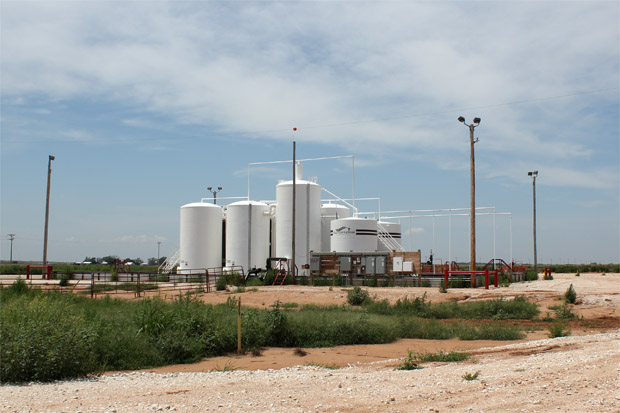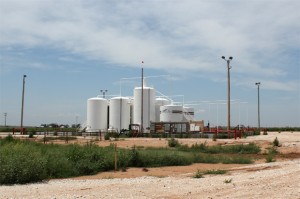
A disposal well in northwest Oklahoma.
Joe Wertz / StateImpact Oklahoma


A disposal well in northwest Oklahoma.
Joe Wertz / StateImpact Oklahoma

Joe Wertz / StateImpact Oklahoma
A Love County disposal well was shutdown last week after a state seismologist suggested it might have triggered a swarm of damaging earthquakes that shook the area for weeks in September.
The well, located near Marietta, was new, and waste fluid injection started on Sept. 3. The quakes started two weeks later, on Sept. 17, EnergyWire’s Mike Soraghan reports.
The strongest was magnitude 3.4, and they have damaged chimneys, broken windows, and caused objects to fall in homes and businesses.
Oklahoma’s largest earthquake was likely triggered by a disposal well, seismologists say, and a spike in earthquake activity in Oklahoma and other states has been linked to disposal operations. Oklahoma’s regulatory response has been more passive than most, StateImpact reported in May.
With input from the Oklahoma Geological Survey, the Oklahoma Corporation Commission ordered the operator, Tom Dunlap of Love County Disposal, to reduce the volume and pressure of injection, EnergyWire reports. The Corporation Commission also ordered the operator to install a digital pressure meter that will feed data to researchers studying disposal well earthquakes.
The Corporation Commission’s response was similar to one suggested by the National Academy of Sciences, EnergyWire reports:
Skinner said the OCC was employing a “red light, yellow light, green light” approach. The limits on injection were a yellow light. The National Academy of Sciences recommended such a traffic light protocol in a 2012 report.
The operator decided to shut down the well after the limits were imposed, EnergyWire reported.
Well operator Tom Dunlap did not cite the earthquakes in his message to state officials that he would be “shutting in” the well until further notice.
The oil and gas industry uses disposal wells to store saltwater and other waste fluids. Fluids are injected deep underground, where they won’t contaminate water supplies. But the fluid can cause fault lines to slip, triggering earthquakes.
The Love County quakes were small, but damaging. “This sort of damage from a magnitude 3.4 suggests a shallow focal depth,” OGS seismologist Austin Holland wrote in a preliminary report, which is embedded above. After the quakes, the OGS installed four seismic sensors to study the potential link.